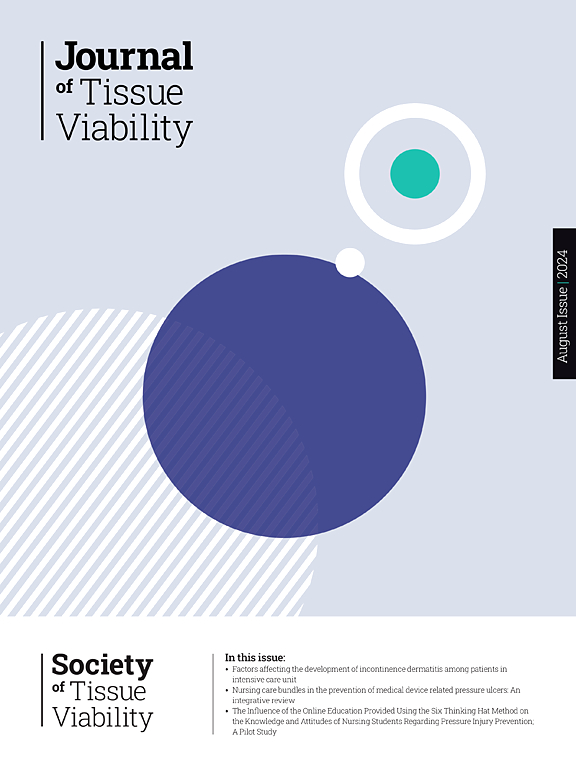血流受限时上肢和下肢动脉完全闭塞压预测公式的建立
IF 2.4
3区 医学
Q2 DERMATOLOGY
引用次数: 0
摘要
血流量限制(BFR)是一项广泛应用于运动和康复的创新技术,用于通过低负荷运动增强肌肉力量和肥厚。确定合适的肢体闭塞压力(LOP)是影响其有效性和安全性的关键因素。本研究旨在建立基于人体测量学和血流动力学变量估计上肢和下肢LOP的预测公式,为BFR应用提供标准化和个性化的方法。对39名年龄在18-40岁的健康参与者进行了横断面观察性研究。分析了收缩压和舒张压、肢体周长和BMI等变量。LOP由两名独立评分者使用多普勒超声测量,并对每条肢体建立多元线性回归模型。结果显示,收缩压和肢体周长是上肢和下肢LOP的关键预测因子,分别解释了39.5%和40.9%的方差。BMI在两个模型中都不是一个显著的预测因子。结果表明,LOP测量结果具有较高的组内和组间信度,组内相关系数(ICC)为0.99,组间相关系数为0.98,表明一致性良好。测量的标准误差(SEM)范围为1.08至4.10 mmHg,而最小可检测变化(MDC)范围为2.99至11.37 mmHg。研究结果为个性化BFR方案提供了可靠的框架,提高了安全性和有效性,同时减少了临床和运动环境的可变性。未来的研究应该在不同的人群中验证这些公式,并探索它们在运动中的应用。本文章由计算机程序翻译,如有差异,请以英文原文为准。
Development of a predictive formula for arterial complete occlusion pressure in upper and lower limbs during blood flow restriction
Blood flow restriction (BFR) is an innovative technique widely utilized in sports and rehabilitation for enhancing muscle strength and hypertrophy with low-load exercises. A critical factor for its efficacy and safety is determining the appropriate limb occlusion pressure (LOP). This study aimed to develop predictive formulas for estimating LOP in the upper and lower limbs based on anthropometric and hemodynamic variables, enabling a standardized and personalized approach to BFR application.
A cross-sectional observational study was conducted with 39 healthy participants aged 18–40 years. Variables such as systolic and diastolic blood pressure, limb circumferences, and BMI were analyzed. LOP was measured by two independent raters using Doppler ultrasound, and multiple linear regression models were developed for each limb. Results showed that systolic blood pressure and limb circumferences were key predictors for LOP in both upper and lower limbs, explaining 39.5 % and 40.9 % of the variance, respectively. BMI was not a significant predictor in either model.
High intra- and inter-rater reliability of LOP measurements was demonstrated, with intraclass correlation coefficients (ICC) of 0.99 for intra-rater and 0.98 for inter-rater reliability, indicating excellent agreement. The standard error of measurement (SEM), ranged from 1.08 to 4.10 mmHg across measures, while the minimum detectable change (MDC), ranged from 2.99 to 11.37 mmHg.
The findings provide a reliable framework for personalizing BFR protocols, improving safety and efficacy while reducing variability in clinical and sports settings. Future research should validate these formulas in diverse populations and explore their application during exercise.
求助全文
通过发布文献求助,成功后即可免费获取论文全文。
去求助
来源期刊

Journal of tissue viability
DERMATOLOGY-NURSING
CiteScore
3.80
自引率
16.00%
发文量
110
审稿时长
>12 weeks
期刊介绍:
The Journal of Tissue Viability is the official publication of the Tissue Viability Society and is a quarterly journal concerned with all aspects of the occurrence and treatment of wounds, ulcers and pressure sores including patient care, pain, nutrition, wound healing, research, prevention, mobility, social problems and management.
The Journal particularly encourages papers covering skin and skin wounds but will consider articles that discuss injury in any tissue. Articles that stress the multi-professional nature of tissue viability are especially welcome. We seek to encourage new authors as well as well-established contributors to the field - one aim of the journal is to enable all participants in tissue viability to share information with colleagues.
 求助内容:
求助内容: 应助结果提醒方式:
应助结果提醒方式:


